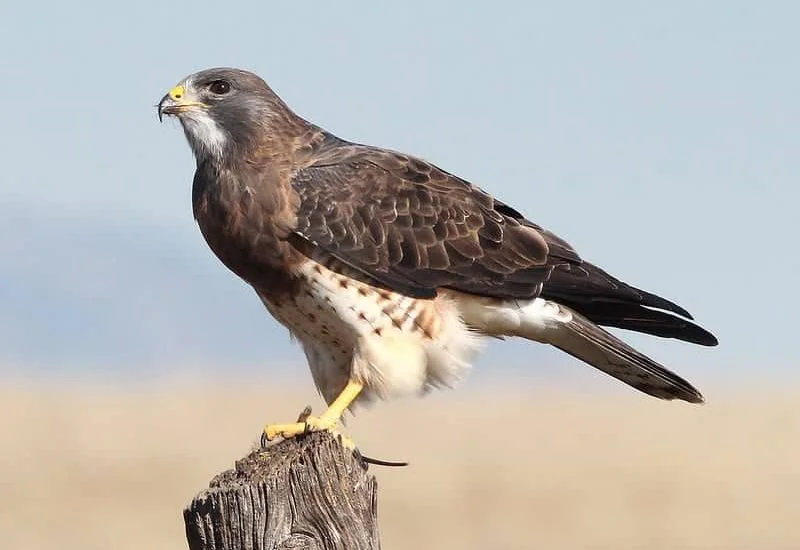
Minnesota is a state that borders Canada and is known for having a large abundance of iconic wildlife.
Some of this wildlife includes hawks, nine species of hawk can be seen in Minnesota.
The nine species of hawk are: Sharp-Shinned Hawk
- Cooper’s Hawk
- Northern Goshawk
- Red-Shouldered Hawk
- Broad-Winged Hawk
- Swainson’s Hawk
- Red-Tailed Hawk
- Rough-Legged Hawk
- Ferruginous Hawk
Want to learn more? This book on the Birds of Prey of North America is a fantastic read!
The Red-Tailed Hawk is the hawk you are most likely to encounter when in Minnesota and the hawk you are least likely to encounter is the Ferruginous Hawk.
The Ferruginous Hawk is very rare in Minnesota and is usually only seen on the western edge of Minnesota.
Minnesota is described as having a typical continental climate, meaning they have harsh winters and humid summers.
Because it is a mid-western state, this allows the climate to have clear, distinct characteristics for each of its seasons.
Minnesota is known as the ‘Land of 10,000 lakes’, despite having over 15,000, and it has an impressive number of state parks.
There are 75 state parks in total in Minnesota, the most popular being Fort Snelling State Park with yearly visits of close to 800,000. Some of these state parks are known for being excellent bird-watching spots.
In Frontenac State Park you are able to see migrating hawks such as the Sharp-Shinned, Broad-Winged and Red-Tailed Hawk. Itasca state park is also a good bird-watching spot if you are specifically looking for a Broad-Winged Hawk.
Now that we’ve discussed a little about Minnesota itself and the hawks that reside there, let’s learn a little more about each of these hawks.
Below I’ve made a profile for these nine species of hawks, including general descriptions and their best viewing spots.
They really are a fascinating set of birds and if you read on, I think you’ll find it fascinating too.
Want to attract birds of prey to your yard? Take a look at our article!
What Hawks can be seen in Minnesota?
1. Sharp-Shinned Hawk
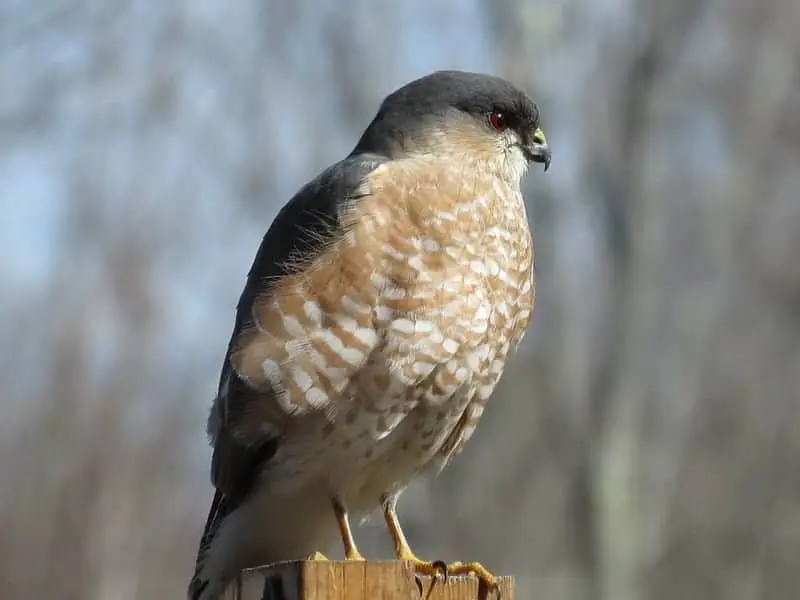
“Sharp-Shinned Hawk” by ‘Dennis Murhpy‘ is licensed under CC BY 2.0
The Sharp-Shinned Hawk is a very small species of hawk, the males being the smallest hawks in the USA.
The females are approximately one-third larger than their male counter parts. IUCN has classified the conservation status of the Sharp-Shinned Hawk to be least concern.
The Sharp-Shinned Hawk has slate-coloured feathers covering its wings and back. It has pale orange feathers covering its breast.
Juvenile Sharp-Shinned Hawks are covered in brown feathers and some have white underbelly feathers.
The Sharp-Shinned Hawk’s habitat is in dense forests, this is where it makes its nest, on low baring trees.
The hawk has two distinct calls, one that is said to sound like ‘kik-kik-kik-kik’ and a shrill squeal.
When mating, a male and a female can be seen flying overhead in a circular motion as a show of courtship.
They raise their young together, males catching prey when the hatchling is first born.
Due to their wide distribution, there isn’t a place in Minnesota where Sharp-Shinned Hawks are commonly seen. That being said, you are most likely to find one in coniferous tress, roosting close to the trunk.
The best time to see the Sharp-Shinned Hawk is during the winter when they are migratory residents in Minnesota.
However, there are a decent amount of hawks that decide to stay in Minnesota all year round.
2. Cooper’s Hawk
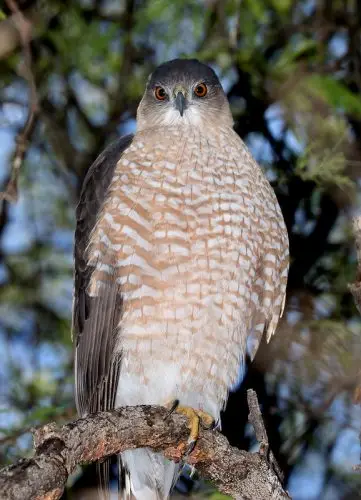
Cooper’s Hawks are classified as a medium size hawk, they are similar in size to a crow and once again the females are usually much bigger than the males.
They are native to northern America and classified by IUCN as least concern, with a note of an increasing population.
Cooper’s Hawks are crow-sized hawks and are known as having a typical hawk shape. Adults have feathers of steel blue on their back and wings, and have warm red feathers covering their bellies.
Juveniles have brown backs and wings and have streaks of brown feathers covering their underbelly. Cooper’s Hawks stay in wooded habitats, ranging all the way from dense, leafy forests to certain backyards.
They make their nests in trees and are classified as an aerial forager, they are known for being silent.
There is no particular place of abundance of the Cooper’s Hawk, but in Minnesota they are most commonly seen in the southern regions of the state.
They are a migratory bird, but some have been known to take up permanent residence in the south-east of Minnesota.
Some birdwatchers have noticed them more in urban areas such as the twin cities, but it is not the most ideal place to be watching for a hawk.
Autumn, particularly October, is the best time to try and spot a Cooper’s Hawk.
They like to take flight early in the mornings, around sunrise. Their migration usually begins mid-October so it is the best chance to spot them soaring through the sky.
Cooper’s Hawks are secretive and quieter during their breeding season, this is in spring and is usually the worst time to go if you want to catch a glimpse.
3. Northern Goshawk
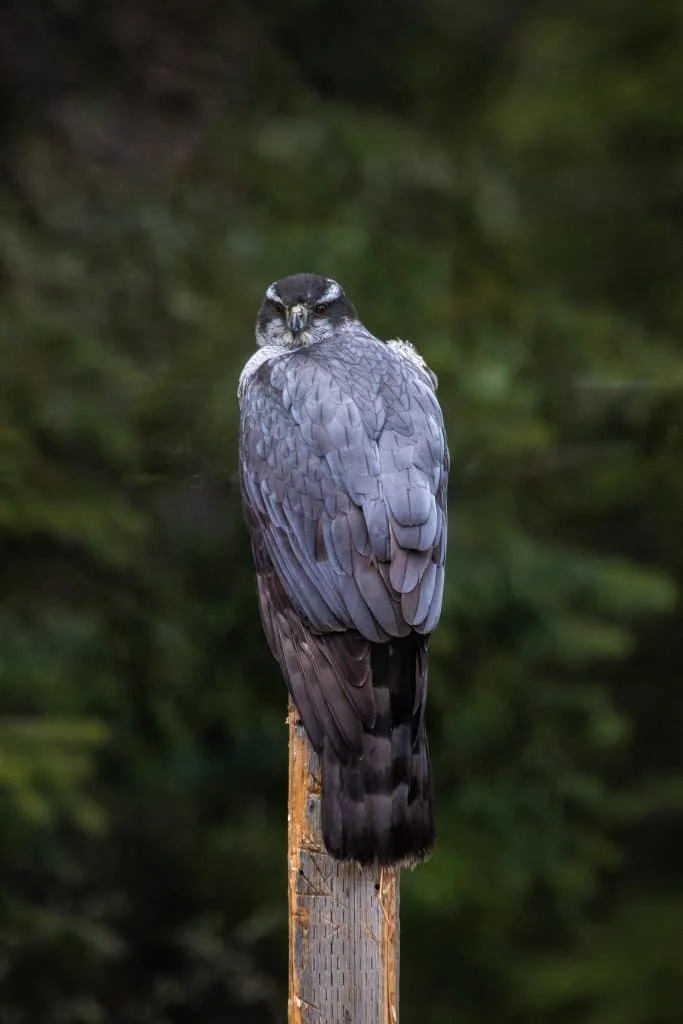
Northern Goshawk’s are classified as a large hawk and are close to the size of a goose. Adult Goshawks have slate-grey wings and a pale grey underbelly.
Like other hawks, females are larger than males. Juvenile Goshawks have streaky brown feathers. Goshawks make their habitats and nests in forests, mainly coniferous forests.
Goshawks are very protective of their nests and have been known to attack humans, so observe from far away.
They have an alarm that sounds like a ‘ki-ki-ki’ which they use when threats are close.
The best time to see a Northern Goshawk is in the spring and autumn, when most hawk watches take place.
In spring they can be seen doing display flights so it is the best time to search. During winter, they often migrate from their breeding spot so are more difficult to see. They can still be seen year-round.
Northern Goshawks are known for their migrations which occur in Duluth’s Hawk Ridge more than any other regions throughout northern America.
Because of this, Hawk Ridge is one of the most popular bird-watching spots, particularly for hawk enthusiasts. They are also largely spotted at the western edge of Lake Superior.
4. Red-Shouldered Hawk
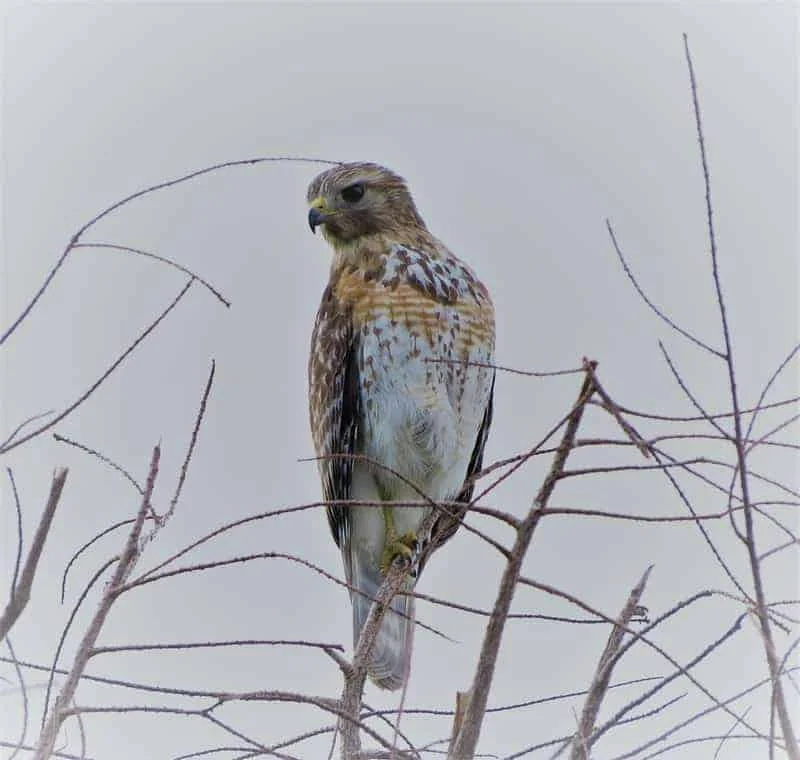
The Red-Shouldered Hawk is classified as a large hawk and has very colourful feathers.
They have white and dark brown checked wings and warm red feathers on its breast. Juveniles have brown backs and white underbellies.
Red-Shouldered Hawks make their nests in woodlands which often lie on the edges of rivers and swampland.
The Red-Shouldered Hawk has a distinct call described as a ‘kee-aah’ sound, with the second note being a much lower pitch.
The best chance to see a Red-Shouldered Hawk is in autumn, particularly at the end of October.
They are short migratory birds that begin said migration in autumn, there have been counts of up to 300 hawks being seen during their October migrations at mountains.
The south of Minnesota is the prime spot for seeing Red-Shouldered Hawks.
However, they are classified as being uncommon in Minnesota as that is the furthest north that they have been observed making their nests.
They migrate south so you may be able to see a Red-Shouldered Hawk begin its migration in the south of Minnesota.
5. Broad-Winged Hawk
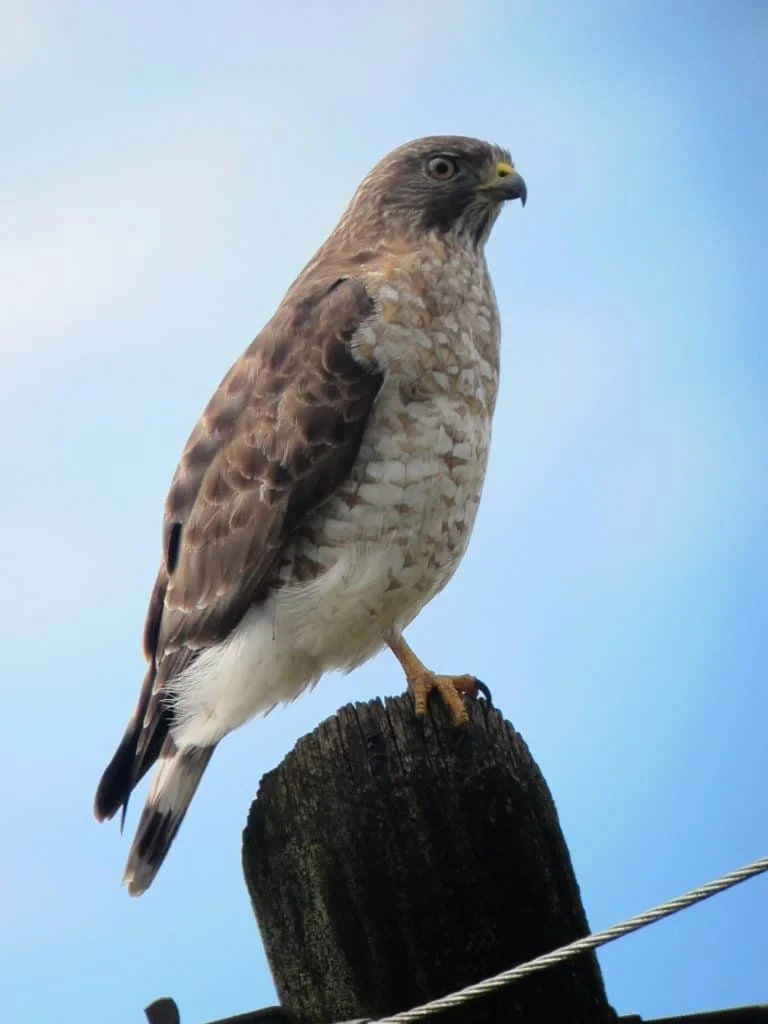
“Broad Winged Hawk” by ‘Felipe Uribe‘ is licensed under CC BY 2.0
They have reddish-brown feathers and black and white bars on their tails. Juveniles have lighter brown feathers.
Broad-Wings often nest in forests and spend a lot of their time in the canopies of leaves.
Their call is compared to that of a piercing whistle and is most commonly heard during the summer.
When they migrate they often do so in flocks, rather than solitarily like lots of hawks.
They have spring and autumn migrations and do so in large flocks which is the easiest time to try and spot one.
Their autumn migration begins in September which is the prime time to watch. They usually then return in the springtime to spend the warmer months in Minnesota’s forests.
Broad-Winged Hawks are very common in Minnesota compared to other hawks and are found in the forest regions of the state.
They are more commonly spotted in the northern forests of Minnesota and unless they are migrating, it is more likely to see one perching on a branch waiting to catch prey than it is to see one flying.
6. Swainson’s Hawk
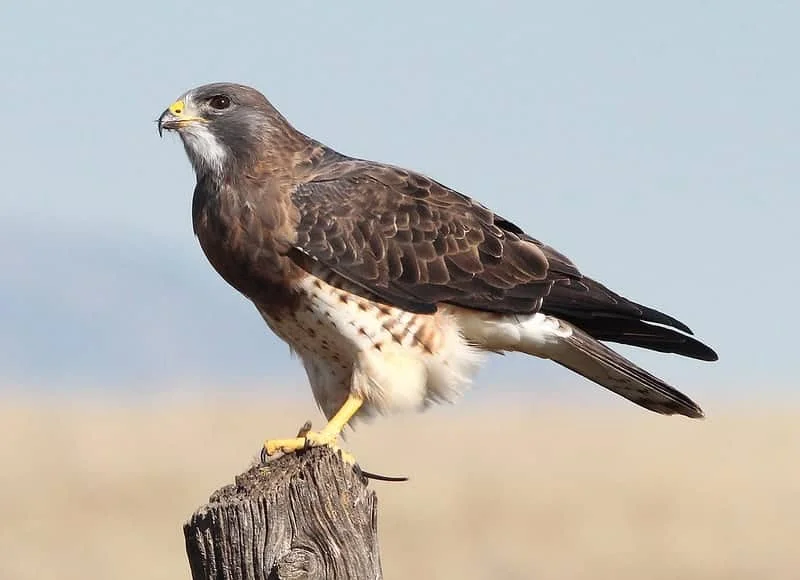
Swainson’s Hawks are large hawks with short tails and they are known for having long wings. Most Swainson’s Hawks have dark feathered wings and back with their bellies being a bright white.
However there can be a large amount of colour variation between hawks. During the summer, these Hawks spend their time in wide-open spaces and nest in grasslands.
Swainson’s Hawks are rare to see in Minnesota, but when they are seen it is in the western and the southern regions of the state.
They are usually spotted perching on fences and telephone poles to gain a view of open grasslands. They use this open space to hunt for their prey.
The best time to see a Swainson’s Hawk in Minnesota is in the summer when they spend their time in wide open spaces.
In winter they have been known to spend their months in Argentina before migrating back to the USA in spring.
If you want to catch a glimpse of this Hawk soaring then the best time is in late august when they begin their autumn migration.
7. Red-Tailed Hawk
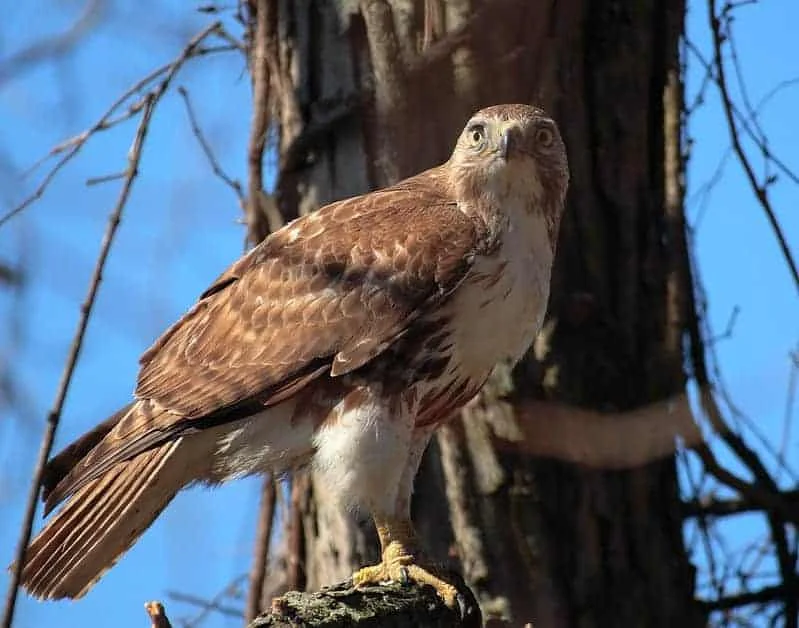
The Red-Tailed Hawk is the second largest hawk in north America.
As the name suggests they have a red tail and white feathered bellies. Red-Tailed Hawks are solitary birds and habituate in the open country, often perching on lone trees.
The Red-Tailed Hawk has a scream that sounds very familiar to the distinct raptor screams in Hollywood movies.
The male Red-Tailed Hawk will put on a display flight to try and impress a female, this display involves wide circles at a great height.
The best place to see Red-Tailed Hawks in Minnesota is in the open country close to towns and cities and along the tree lines.
They are frequently seen in Minnesota but their distribution and migratory patterns across the state are still largely unstudied.
The most frequently seen nesting sites of the Red-Tailed Hawk is in central Minnesota.
The best time to see the Red-Tailed Hawk in Minnesota is during the summer months, between their breeding and migratory period.
A lot of Red-Tailed Hawks will migrate south during the winter; however some make a permanent residence and stay in Minnesota even in the colder months.
8. Rough-Legged Hawk
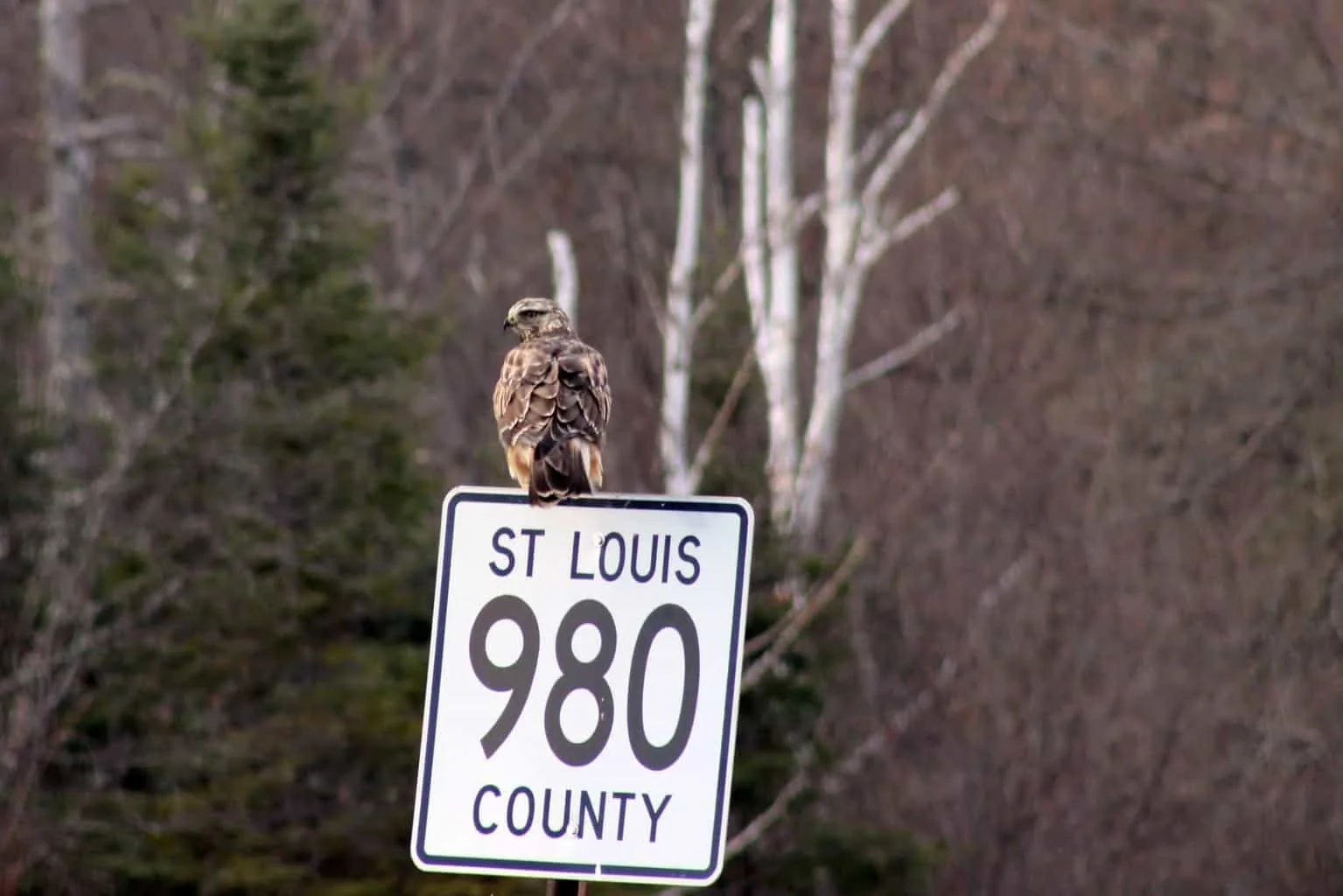
Rough-Legged Hawks are medium to large sized hawks with vibrant feather patterns.
They have pale heads and dark bellies with pale tails and dark feathers on the tip.
These birds breed in the artic and migrate in winter to open habitats like fields and have also been seen habituation US airports.
Their nest is built with a bulky mass of sticks on the cliffsides. Some hawks have been observed using bones to make their nest as well.
The winter months is the best time to try and spot a Rough-Legged Hawk.
They will migrate to Minnesota in the colder months after their breeding season and usually stay in the state from September to may.
However, there have been a sparse few spotted in Minnesota during the summer months.
The best place to search for the Rough-Legged Hawk in Minnesota is open country areas, such as grasslands and cliff-sides.
They will spend a lot of their time in daylight perched on utility poles near farms with open fields looking for their prey. You are most likely to spot them when taking a country drive.
9. Ferruginous hawk
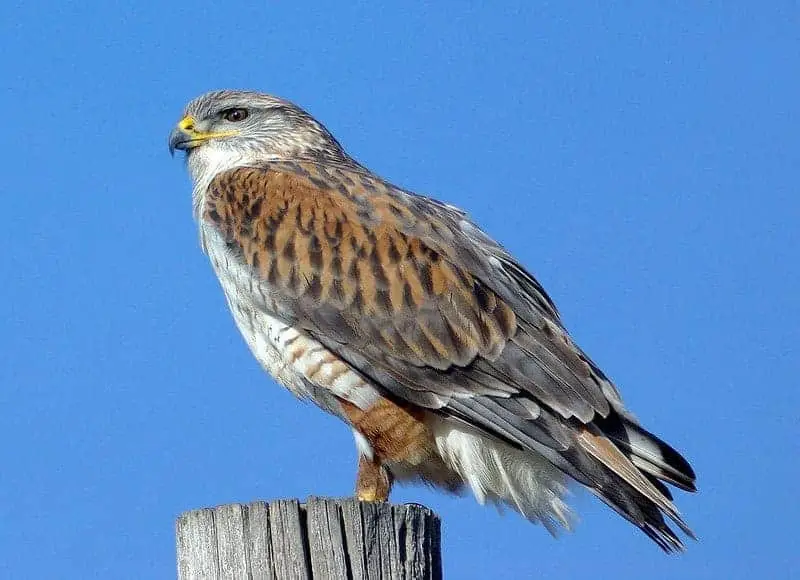
The Ferruginous Hawk is a medium sizes have with pale white underwings and belly.
The have rusty coloured feathers in spots on their belly and legs.
Ferruginous Hawks habituate in open spaces like grasslands but they have also been seen living on the edges of woodlands.
Ferruginous Hawks need large nests and because of the difficult bulky sticks used they often just modify an existing nest.
The Ferruginous Hawk is very rarely spotted in Minnesota, but if you watch a chance of seeing one the best place to do so is along the western edge of the state in open country areas.
They are usually spotted circling these open areas of country in the sky.
The best time to try and catch a glimpse of a Ferruginous Hawk is in the summer months.
During the summer they spend most of the day in the open areas hunting.
This is before they migrate further south during the winter months. They are frequently seen in the winter, but not in Minnesota.

About Us
We are avid bird-watchers who recently retired, allowing us more time to travel the world. Fortunately, we have managed to visit numerous countries around Europe, Asia, and America. Watching and photographing birds has been a passion for many years and we are making the most of the extra time on our hands!
